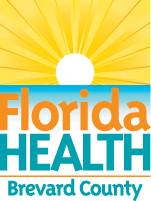Frequently Asked Questions: Boil Water Notices
September 28, 2022

September 28, 2022
Frequently Asked Questions: Boil Water Notices
Contact:
Cynthia Leckey, EH Director
brevard.ehs@flhealth.gov
321-633-2100
Viera, FL — Below are some frequently asked questions regarding precautionary boil water notices.
- What is the proper way to disinfect my water so that it is safe to drink?
To be safe, you can disinfect tap water using the procedures below. Do not rely on unverified methods for contaminating water. If water is cloudy, let it settle and filter it through a clean cloth, paper towel or coffee filter. This will help the disinfection process. If you have any extra water, put it in containers that were disinfected (see information below water disinfection).
The preferred method to disinfect water is to Boil Water.
- Bring water to a rolling boil for at least one minute to kill harmful bacteria and parasites.
- To improve the flat taste of boiled water, add one pinch of salt (depending upon health conditions) to each quart or liter of water, or pour the water from one clean container to another clean container several times.
If boiling is not possible, use Household Bleach.
- Add eight drops of plain unscented household bleach (four to six percent strength), which is about 1/8 teaspoon or a dime sized puddle, per gallon of water.
- Do not use color safe bleach or bleaches with added cleaners.
- If a higher strength bleach is used (up to 8.25 percent strength), only add six drops of bleach.
- Mix the solution and let it stand for 30 minutes.
- If the water is cloudy after 30 minutes, repeat the procedure one time.
- If the chlorine taste is too strong, pour the water from one clean container to another and let stand for a few hours before use.
It is also possible to use other Disinfection Methods.
Note: Follow the instructions on the product label as each product may have a different strength.
- Five drops of Iodine (two percent tincture) can be added to each quart or liter of water to be disinfected.
Note: Per the CDC, water that has been disinfected with iodine is NOT recommended for pregnant women, people with thyroid problems, those with known hypersensitivity to iodine or for continuous use for more than a few weeks at a time.
- If the water is cloudy or colored add 10 drops of iodine.
- Stir and let the water stand for at least 30 minutes before use.
- Water disinfection tablets (available at sporting goods departments or stores) that contain chlorine, iodine, chlorine dioxide or other disinfecting agents may also be used.
Containers for water should be rinsed with a bleach solution of one tablespoon of bleach per gallon of water before reusing them.
- How should I wash my hands while using water under a boil water notice?
When using a public water supply, your tap water is safe for basic personal hygiene, especially when you wash hands vigorously with soap for 20 seconds. If you are washing your hands to prepare food, if possible, you should use hand soap with either commercially bottled water or tap water that has been properly disinfected.
- Is potentially contaminated water (where the likelihood of Cryptosporidium is not significant) safe for washing dishes or clothes?
Yes, the water is safe to use if you soak hand-washed dishes for one minute in a bleach solution made of one tablespoon of bleach per gallon of water after washing and rinsing them. Allow dishes to completely air dry. Most household dishwashers do not reach the proper temperature to sanitize dishes.
Yes, it is safe to wash clothes in tap water.
- Is potentially contaminated water safe for bathing and shaving?
The water may be used for showering, bathing, shaving and washing if care is taken not to swallow or allow water in your eyes, nose or mouth. Children and disabled individuals should have their bath supervised to ensure water is not ingested. The time spent bathing should be minimized. Though the risk of illness is minimal, individuals who have recent surgical wounds, have compromised immune systems or have a chronic illness may want to consider using commercially bottled water or tap water that has been boiled and cooled for cleansing until the boil water notice is lifted.
- How should I wash fruits and vegetables and make ice?
Fruits and vegetables should be washed with water that has been boiled and cooled, with commercially available bottled water or water that has been properly disinfected. (See disinfection information in question 1 above.) Ice should be made with boiled water, commercially bottled water or disinfected water.
- What if I have already consumed potentially contaminated water?
Even if someone has consumed potentially contaminated water from either a public water system or a private well, the likelihood of becoming ill is low. Anyone experiencing symptoms such as diarrhea, nausea, vomiting and abdominal cramps, with or without fever, should seek medical attention.
- What infectious organisms might be present in contaminated water?
About the Florida Department of Health
The department, nationally accredited by the Public Health Accreditation Board, works to protect, promote and improve the health of all people in Florida through integrated state, county and community efforts.
Follow us on Facebook, Instagram and Twitter at @HealthyFla. For more information about the Florida Department of Health please visit www.FloridaHealth.gov.



Connect with DOH